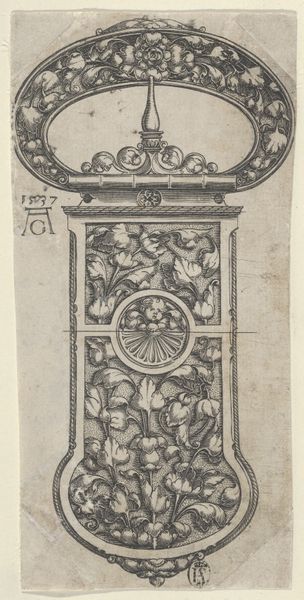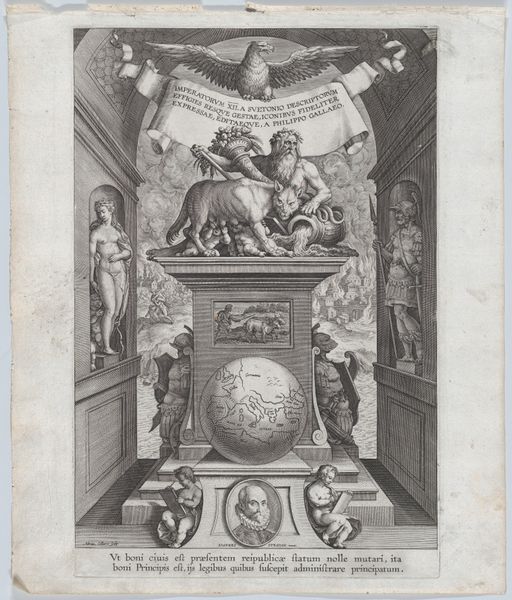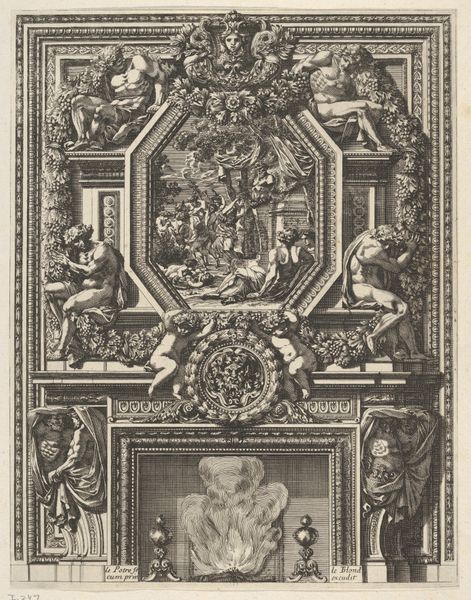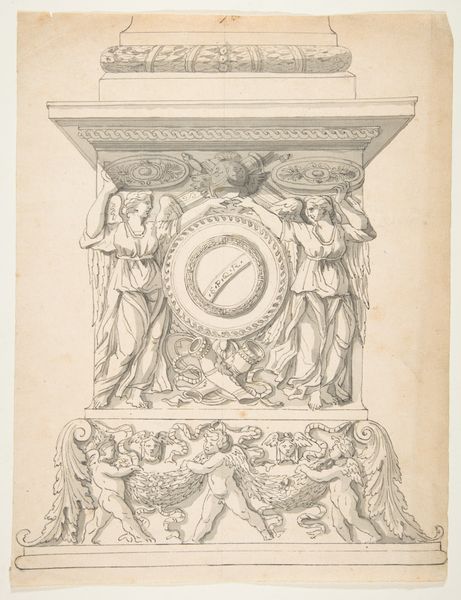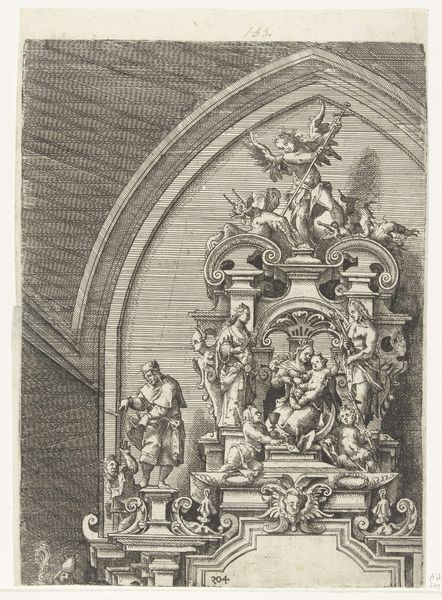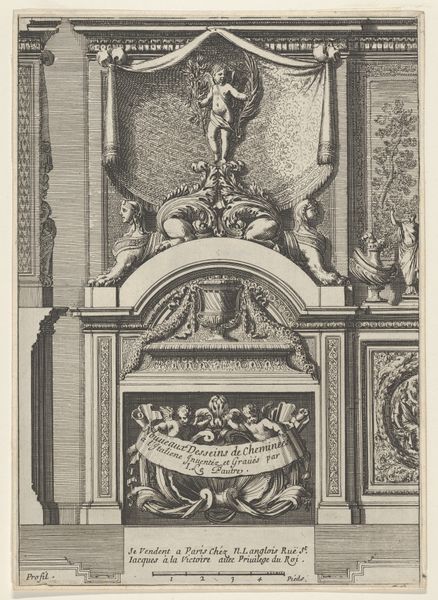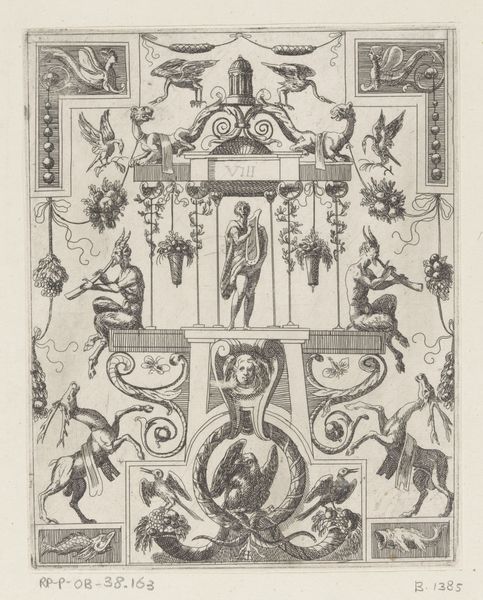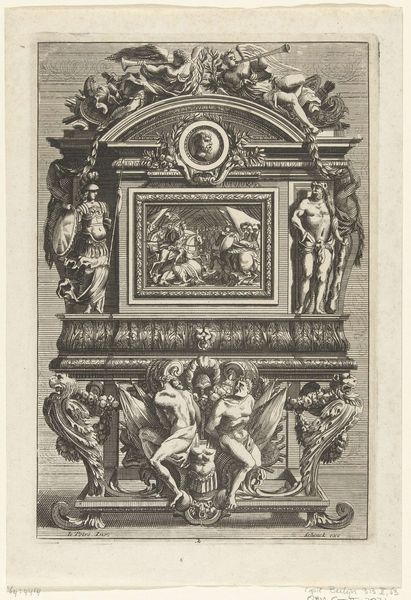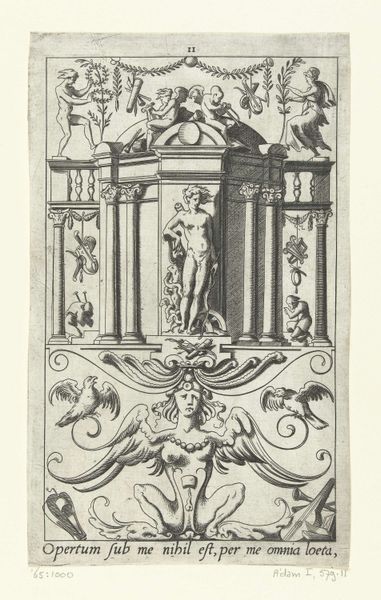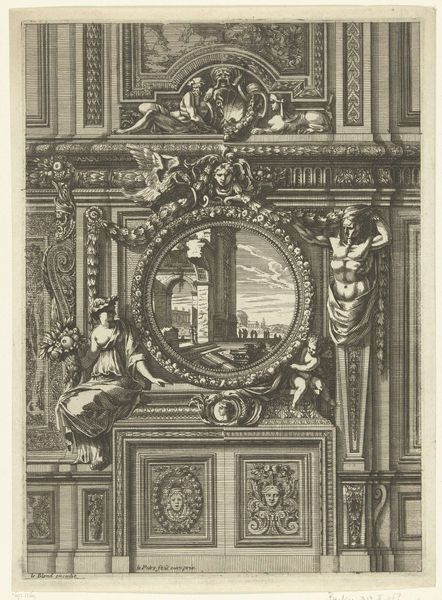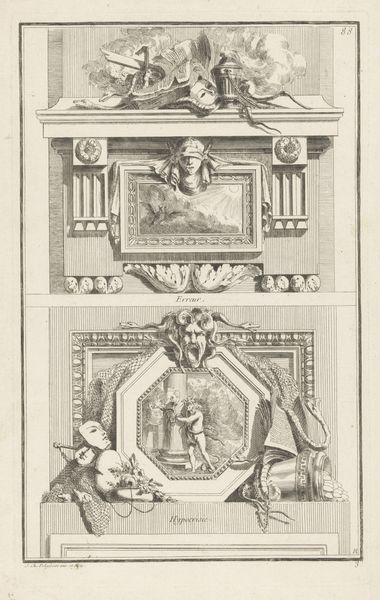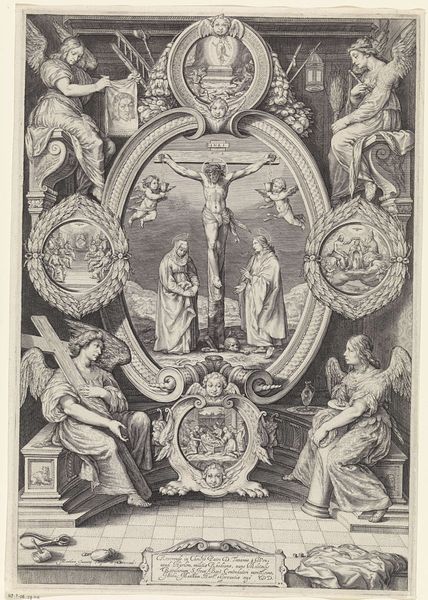
Speculum Romanae Magnificentiae: The Base of the Column of Theodosius 1530 - 1580
0:00
0:00
drawing, print, engraving
#
drawing
# print
#
11_renaissance
#
geometric
#
history-painting
#
engraving
Dimensions: sheet: 11 7/16 x 8 3/8 in. (29 x 21.2 cm)
Copyright: Public Domain
Editor: This is "Speculum Romanae Magnificentiae: The Base of the Column of Theodosius," an engraving by Marcantonio Raimondi, dating sometime between 1530 and 1580. It's incredibly detailed, almost archaeological in its precision. What strikes me is the overt display of power and how deliberately it’s being presented. How do you see this piece operating within its historical context? Curator: Well, the “Speculum Romanae Magnificentiae,” or "Mirror of Roman Magnificence," was conceived as a means to evoke the grandeur of Rome, especially for those who couldn’t travel there. This print is less about pure archeology and more about the political implications of visually preserving and disseminating Rome’s historical power structures. Consider the choice of Theodosius' column: a symbol of imperial authority and triumph. Editor: So it's about power as much as preservation? I guess I assumed the aim was accuracy first, glorification second. Curator: I'd argue the glory *is* the point. Raimondi isn’t simply documenting; he’s actively constructing an image of Rome intended to legitimize contemporary power by associating it with a powerful past. Look at the figures – the winged victories, the putti, the inscription S.P.Q.R. These are potent symbols being re-deployed. How do you think this kind of imagery resonated with its viewers? Editor: It’s interesting to think about how readily viewers might have bought into that message. Perhaps, encountering such impressive visuals, they didn't question the authority being projected, then or now. It definitely changes my perspective knowing that the print is performing its own power play! Curator: Precisely. These prints functioned as tools in a larger game of political and cultural influence, revealing the enduring legacy, and arguably, manipulation, of Roman symbols. Editor: This was more than just an artistic study; it was political. Understanding that shifts the entire framework for analyzing it. Thanks for illuminating that aspect for me!
Comments
No comments
Be the first to comment and join the conversation on the ultimate creative platform.
